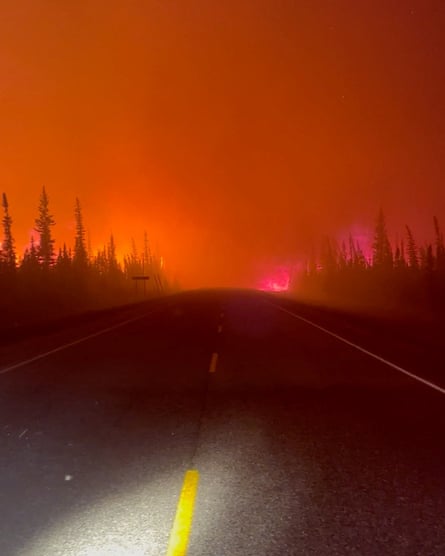The Canadian Press
Thu, August 17, 2023

MONTREAL — From great white sharks around Quebec's Îles-de-la-Madeleine to lobsters conquering new territory, oceanographers say the warming of the Gulf of St. Lawrence is having an impact on the creatures that live in its unique ecosystem.
Data from Fisheries and Oceans Canada show that deepwater temperatures have been increasing overall in the gulf since 2009. In 2022, gulf-wide average temperatures hit new record highs at depths of 150 to 300 metres, and passed the threshold of 7 C at 300 metres for the first time. Average monthly temperatures at the sea surface also set new records in August and September, the data showed.
The news is worrisome to oceanographers, who say they're already seeing the impact of the warming water on different species in the gulf, which touches five provinces at the mouth of the St. Lawrence River.
Philippe Archambault, a professor of oceanography at Université Laval, says that while ecosystem changes are a normal part of nature, the speed of change is striking.
"If we're talking about life in the ecosystem, it doesn't have time to adapt, to reposition itself into new balance, a new method," he said in a phone interview. "Everything is too fast."
Archambault said that while humans can adapt to their environment by building or modifying a house, animals can only move in search of environments where they can thrive.
He said there are signs that some of those changes are happening already, pointing to an increase in sightings of great white sharks in parts of the gulf, and of lobsters expanding from their traditional range around Anticosti Island and the Gaspé Peninsula into new places that might have been too cold a decade earlier.
Stéphane Plourde, a research scientist with Fisheries and Oceans Canada, says there are both "winners and losers" when it comes to warming temperatures.
He says that, in general, cold water species such as northern shrimp are struggling, while there are signs of an increased presence of species that prefer warmer waters.
"There are indications that show that, indeed, the warming can encourage the presence of predators such as bluefin tuna or white shark in the Gulf of St. Lawrence," he said, adding that the increases could also be due to greater population numbers as a whole.
He said it's still too early to know what impact the temperature changes could have on larger mammals, such as whales. He said that because mammals are less directly affected by temperature, the immediate impact is more likely to be behavioural, such as changing feeding areas in response to prey shifts. That phenomenon has recently been observed among endangered North Atlantic right whales, which seem to be increasingly coming into the Gulf of St. Lawrence to search for food.
He said the cumulative effects of the changes experienced by whales — which are hard to study because they move so much — may only become clear down the line.
Plourde said the species that appear to be most affected are tiny organisms, such as krill and plankton, which are just as important because they form the base of the food chain. Scientists are already noting gradual shifts in the presence of different species and timing of population peaks, which Plourde said could eventually have a cascade effect on all the species that depend on them.
Mathilde Jutras, a McGill University PhD candidate in oceanography who studies temperature changes, said the warming in the Gulf of St. Lawrence has been more dramatic than some open ocean areas, in part because of its unique mix of currents.
She said in recent years there has been an increase in the amount of water from the warming Gulf Stream current and a decrease coming from the colder Labrador current.
"Because it's located at the intersection of the Gulf Stream and of the Labrador current, it's very sensitive to what is happening in those currents," she said. "It's kind of like the canary in the coal mine of the changes that we're seeing in the North Atlantic Ocean."
At the same time, she said there has been an increase in deep water areas with low oxygen, making it harder for species to thrive.
On the surface, she says there's been less sea ice, which could mean more mixing of the gulf's different water layers during storms.
All three say more study is needed to learn about how the confluence of different changes will ultimately affect life in the gulf.
Archambault says there's a risk that the ecosystem reaches a "tipping" point brought on by the combination of different stressors, including warming temperatures, acidification, increasing ship traffic and winter storms. He said that while scientists have a tendency to study phenomena individually, they need to look at how they might combine.
"All these stressors seem to be increasing, in general. And what is their interaction?" he asked. "That's what we're trying to understand."
This report by The Canadian Press was first published Aug. 17, 2023.
Morgan Lowrie, The Canadian Press














